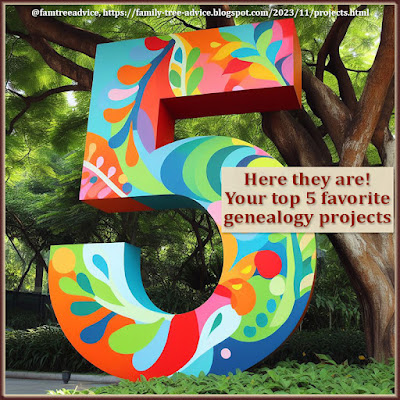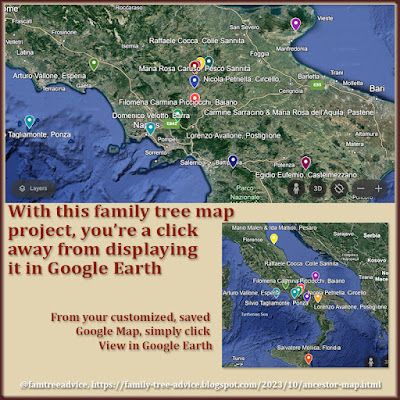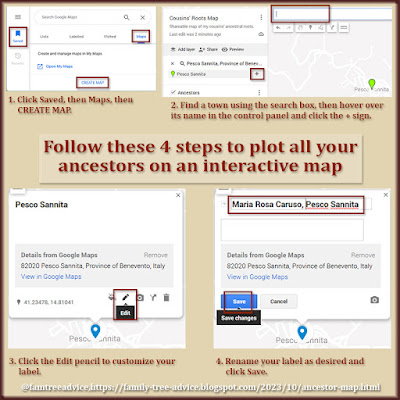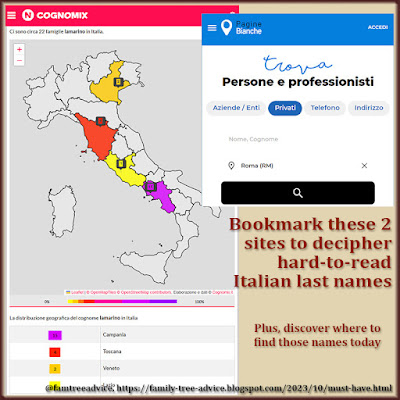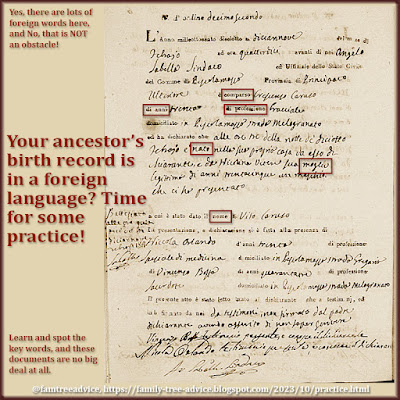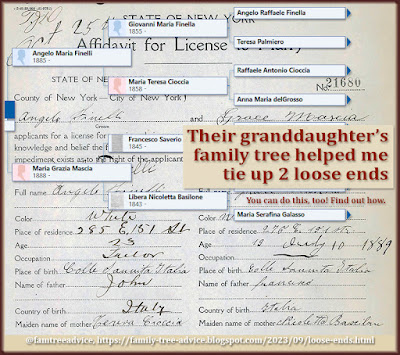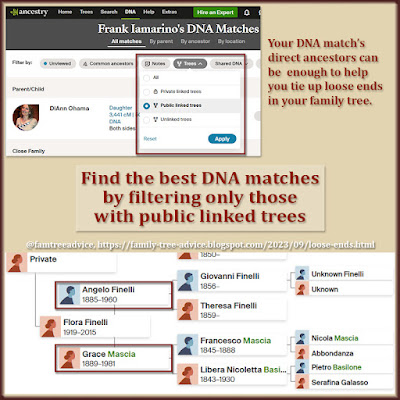I've been on a rampage this year, adding thousands of people to my family tree. Once I discovered that everyone in my ancestral hometowns had a connection, I set out to prove it. Each town's vital records (1809–1942 with gaps) added at least 20,000 documented people to my family tree. (Discover the Lessons Learned from My One Place Study.)
During this journey I've learned a lot about the first and last names in my towns. I realized that I've developed 4 rules that make it easier to manage my 23,073 families. (That number comes from the powerful and free Family Tree Analyzer and my latest GEDCOM file.)
Here's a look at 4 naming rules to use in your own family tree.
 |
| Follow these simple naming rules to avoid errors and confusion. |
1. Use Birth Names
The best way to record any person in your family tree is by their birth name. If you have their birth or baptism record, then you know what name their parents chose. We all knew my grandmother as Mary Leone, but Leone is her husband's name, not hers. And Mary is an Americanization of her given name—which is different than the name she claimed was hers! Her birth record calls her Maria Carmina Sarracino, so that is the name I recorded in my family tree.
Why record a woman in your family tree with her husband's last name when you know her father's last name? When you view her, it's plain to see who she married.
It's important to use original last names so all the siblings in a family unit show the same name. Anything else looks like a research blunder.
2. Use Original Spelling
I have examples from my ancestral hometowns where the spelling of a last name changed over time. The name:
- Esci became Iesce
- diRuccia became Ruccia
- Cifaldi became Gifaldi
- Italian names ending in an o later ended in an i.
Since my family tree covers many generations, I use the original last name for continuity. Then, since the name may change over time, I note this in an easy-to-find place. In Family Tree Maker, I use the description field for a person's birth fact to note alternative spellings. (Don't overlook this important feature to leave research breadcrumbs in your family tree.)
Many times a person will use a first name variation during their life. That causes problems when you're searching for the children of a particular couple. If the father was born Domenico but goes by Giandomenico as an adult, you may overlook his children.
In these cases I make 2 kinds of notes in that birth fact description field:
- For the father, Domenico, I'll type "aka Giandomenico"
- For their child, I'll type that their "father is called Giandomenico on their birth record"
These notes have bailed me out time and again when I find a vital record that doesn't seem to fit.
Because I researched all the town's records that I know people named Gifaldi were the descendants of people named Cifaldi. To make sure I found every family member, I changed my inventory to show only the original spelling.
3. Record But Don't Use Name Variations
On a similar note, if someone's vital record uses a different spelling of their name, I'll note that fact, too. I record the Esci children whose vital records say Esce, Iesce, or Iesci as Esci. But I add a note to the description field saying, "Her last name is Iesce on her birth record."
This happens with first names, too. A woman born as Concetta is Maria Concetta on her death record. During review, that may look like I made a mistake. So I put a note in the description field of the death fact saying, "She is called Maria Concetta on her death record." This assures me that I did my careful research, and there is a discrepancy in the documents.
I leave her name as Concetta, but understand that she may be Maria Concetta on the birth records of her children. And I'll note that for each child.
4. Expand Searches to Include Name Variations
You must take all the name variations into account when you're searching for records. I've created my own extraordinary database of the vital records of my ancestral hometowns. I've named each record image with the subject's name and their father's first name. That way, I can easily search for all the children of a particular man.
But what happens when that man's first name has variations? It's simple. You have to search for all the logical variations. A man named Giambattista at birth may be listed on his children's birth records as:
- Giambattista
- Gianbattista
- Giovambattista
- Giovanbattista
- Giovanni Battista
- Giovanni
- Battista
When a father has a compound name that has variations, I search for all possibilities. In this case, I can search for children with the right last name and a father whose first name begins with "Gi." (I'll search for Battista alone as a second search.) Then I can view the results, checking for Giambattista's wife's name, their ages, etc.
One huge benefit to my quest to get entire towns into my family tree is name familiarity. I can:
- spot a spelling variation
- decipher the worst handwriting, and
- identify an out-of-towner in an instant.
That's because I know all the names in my towns. I know their original spellings and their common variations.
How familiar are you with the names from your ancestral hometowns? Are your naming styles causing confusion?



